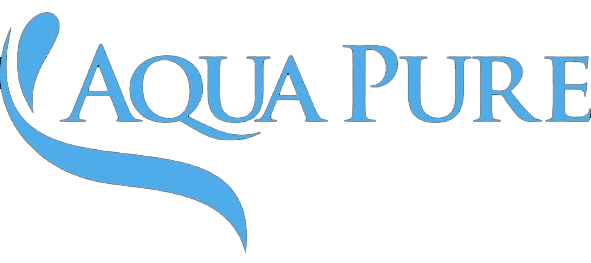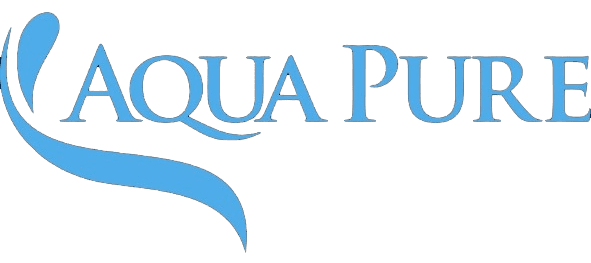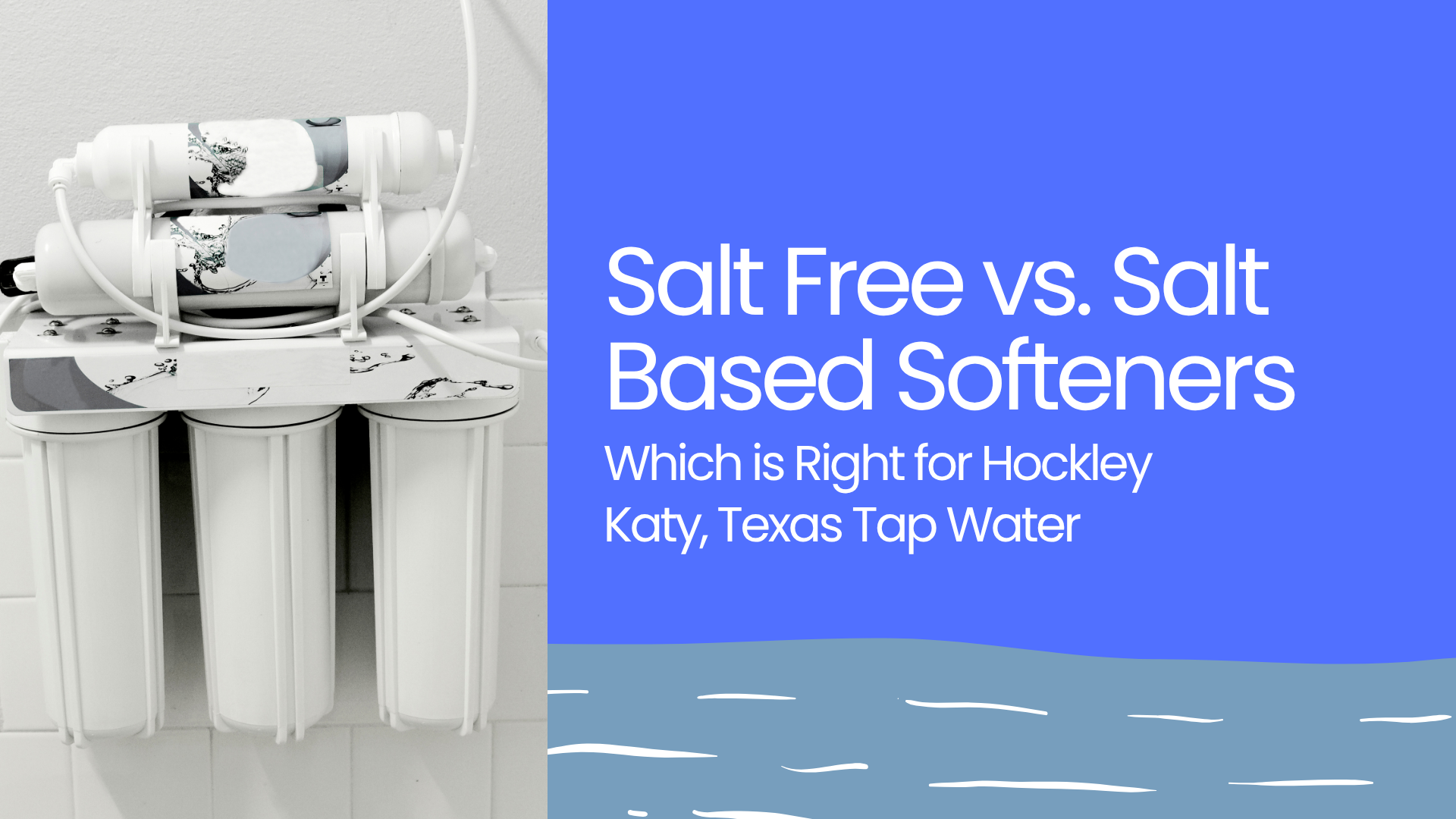As your neighbor who’s spent a few weekends peering at water test kits and chatting with plumbers, I get asked this a lot: “Should I use a salt-free softener or a traditional salt-based one here in Hockley / Katy?” The honest answer is: it depends. The “best” choice hinges on your water chemistry, your household priorities, and how much maintenance you want. Let’s walk through the local context, what each option does (and doesn’t), and how to decide smartly.
The Local Water Story: What’s in Hockley / Katy Tap Water?
Hard Water Is the Baseline
One thing nearly everyone in this area shares: hard water. Most of our waterespecially groundwater in Fort Bend and Harris County zonesis loaded with calcium, magnesium, and other dissolved minerals. According to the Texas Water Development Board, groundwater in Fort Bend County is “generally very hard.” In official drinking water reports, utilities serving Katy and surrounding areas report compliance with federal standards. But compliance doesn’t mean the water is softit just means it’s legally safe to drink.
So you’ll see things like scale on faucets, cloudy glasses, and mineral buildup in appliancesall signs of “hard” water that doesn’t violate law but is a nuisance in daily life.
Disinfection Byproducts & Chlorine Residuals
Because our water suppliers disinfect using chlorine (or chloramines), there’s a secondary issue: disinfection byproducts (DBPs). The Katy-Hockley Regional Water Plant, for instance, has reported elevated levels of bromodichloromethanea trihalomethane (THM)and dibromoacetic acid, exceeding the health guidelines recommended by the Environmental Working Group (EWG). While these levels meet federal legal limits, they point to the fact that chlorine transformations and residuals are a real factor to watch, especially for those concerned with long-term exposure.
Other Contaminants
- Arsenic: In recent EWG summaries, the City of Katy shows arsenic levels well below EPA limits, but above EWG’s stricter health goals. Chromium (hexavalent): Also flagged above EWG health guidelines (though still within regulatory compliance) in some Katy system reports.
- Sediment / turbidity: Occasional spikes can happen, especially after heavy rain or pipe work, but are typically managed by the water utility.
- Lead / copper: These are less common in newer plumbing, but older homes (or old service lines) can have trace amounts if corrosion control isn’t perfect.
So, in your home you may see scale, notice chlorine smell, see occasional cloudiness, or hear your appliances insisting on frequent cleaning.
How These Impurities Affect Health, Plumbing & Daily Life
Let’s break it down by categoryso you can spot what might be happening in your home.
Health & Drinking Water
- Minerals: Calcium and magnesium are not harmful in moderate quantities. Many people actually consume them as part of their diet (e.g. from milk). However, extremely hard water can interfere with soap performance, leaving residues on skin or hair.
- Chlorine / DBPs: Long-term exposure to certain byproducts has been associated (in some studies) with respiratory issues, irritation, or increased cancer risk. It’s one reason many people want to remove or reduce those residuals at the point of use.
- Trace metals: Arsenic and chromium (when present) are concerning, but our local levels are well under EPA’s legal limits. Still, people who are pregnant or with compromised health often prefer added safety via filtration.
Appliances, Plumbing & Home Surfaces
- Scale buildup: On faucets, showerheads, inside pipes, dishwashers, coffee makers, kettles. Over time this reduces flow and efficiency.
- Reduced life span: Water heaters, ice makers, humidifiersany device that heats or circulates water will suffer more wear if minerals accumulate.
- Spotting and film: Glassware, showers, tilesthose whitish deposits and soap scum lines you scrub off are partly from calcium/magnesium mixing with soaps and residues.
- Clogged valves: In extreme cases, scale deposits restrict valves or flow regulators in appliances.
Daily Frustrations
- Soap doesn’t lather well, you use more detergent.
- Your skin feels tight or hair feels dull (especially with high chlorine + mineral load).
- You are cleaning fixtures and glass more often.
- Your dishwasher or coffee maker needs descaling frequently.
In short: the water may be technically “safe,” but it can feel “hard” in everyday living.
Salt-Free vs. Salt-Based Softeners: What Do They Do?
Before we dive into which is better for you, let’s clarify what each system doesand doesn’t.
Salt-Based (Ion Exchange) Softeners
How they work
These systems run your water through a resin bed charged with sodium (or potassium) ions. As hard water passes through, calcium and magnesium ions swap places, and the resin captures those minerals. Periodically, the unit flushes with a salt brine to regenerate the resin.
Pros
- Very effective at removing hardness minerals (you get soft water by standard definitions).
- Long history, proven technology.
- Helps appliances, pipes, surfaces, etc. by eliminating the source of scale.
Cons / trade-offs
- Adds sodium (or potassium) to the water; not huge amounts, but something to consider (especially for those on strict low-sodium diets).
- Requires regular salt refills and periodic maintenance.
- Discharges brine to the drain, which some homeowners or local regulations may restrict.
- Doesn’t typically remove chlorine, DBPs, or trace metalsyou’ll still need filtration for those.
Salt-Free Conditioners / Template or Nucleation Systems
How they work
These use a variety of techniques (template-assisted crystallization, chelation, catalyzers, magnetic/physical conditioners) to prevent scale from sticking to surfaces. Instead of removing minerals, they convert them to a form that’s less likely to deposit (often microscopic crystals).
Pros
- Zero salt, no brine discharge, less maintenance.
- Doesn’t require regeneration.
- Better option where sodium discharge or regulatory constraints are a concern.
- Works passively, some systems require no electricity or moving parts.
Cons / trade-offs
- Doesn’t truly remove the mineralsthose calcium/magnesium ions still flow through your plumbing.
- Its effectiveness varies based on water chemistry, flow rate, temperature, etc.
- May be less effective for very hard water or problematic piping.
- It doesn’t help with chlorine, DBPs, or heavy metals.
Which One Fits Hockley / Katy Best?
Given our local water characteristics, let’s compare:
Why a Salt-Based Softener is Attractive Here
Because our water is quite hard, a salt-based system can give you real soft water. That means:
- significantly reduced scale,
- smoother operation of appliances,
- easier soap usage,
- longer lifespan for plumbing and heating equipment.
If reducing scale is your top priority, the salt-based route tends to deliver more dramatic results.
Where Salt-Free Makes Sense
If your main goal is scale control (not perfection), and you’re sensitive to sodium discharge or want a lower-maintenance solution, a salt-free system can be a reasonable compromise. For moderate hardness, it might sufficiently reduce visible scale and extend appliance life, though not as dramatically as ion exchange.
The “Hybrid” Approach
In many homes around Katy, the best setup is softening + filtration. For example:
- Use a salt-based softener (or water conditioner) to handle hardness,
- Combine it with a carbon filter or reverse osmosis at drinking faucets to remove chlorine, DBPs, and trace metals.
That gives you the best of both worlds: soft water for all your plumbing, and ultra-clean water for drinking.
How to Judge What You Need: Testing & Inspection
Signs to Watch For
Walk through your home. Do you notice:
- White spots or film on glassware, faucets, or showerheads?
- Difficulty getting suds with soap/shampoo?
- Buildup (whitish crust) inside kettles, coffee machines?
- Poor water flow or reduced performance in appliances?
- Cloudy or milky-looking water when cold (often from mineral suspension)?
If the answer is yes, you have moderate to strong hardness. But those signs alone won’t tell you precisely how hard or what contaminants are present.
Get a Lab Test
Have your water professionally tested. A good test should report:
- Total hardness (in grains per gallon or ppm),
- Chlorine / chloramines levels,
- Total dissolved solids (TDS),
- Metals / trace elements (arsenic, lead, chromium, etc.),
- pH, alkalinity, turbidity, etc.
Aquapure offers a free water test (as part of their service). With that data, you can make a confident decision. (If you like, I can help you interpret your reports later.)
Evaluate Flow & Demand
Check your household’s peak flow (e.g. multiple faucets + showers running). Choose a system sized for your peak demandnot just average usage. Also note how many people live in the house, future expansion, and number of bathrooms.
Realistic Pros, Cons & Cost Considerations
Salt-Based Softener
- Expected lifespan: 10–15 years (with maintenance).
- Salt cost: maybe $200-$300/year depending on hardness and usage.
- Maintenance: recharging salt, occasional resin cleaning, periodic servicing.
- Water waste: regeneration uses extra water (which some see as inefficiency).
- Brine discharge: may be restricted in some municipalities or HOA rules.
Salt-Free Conditioner / Template Systems
- Expected lifespan: also often 10+ years, with fewer moving parts.
- Maintenance: mostly “set and forget,” occasionally flush or clean.
- Lower operating cost: no salt, minimal or no electrical use.
- Effectiveness ceiling: for very hard water, scale may still form over time, just more slowly.
Upfront Installation & Support
Aquapure installs water softeners and filtration systems; they offer:
- free installation and support by certified technicians,
- easy financing with $0 down or Buy Now-Pay Later options,
- lifetime warranties to provide peace of mind,
- customized solutions (not “one size fits all”),
- a Texas-owned, family-operated company trusted in the area for over 10 years.
When you factor installation, parts, and expected maintenance, the total lifetime cost of a well-chosen salt-based system often remains reasonable compared to the damage that untreated scale can cause over time.
Putting It All Together: Decision Guide
Here’s a simple decision path based on your priorities:
| Your Priority | Likely Best Option | Why |
| Maximum scale reduction, longest appliance life | Salt-based softener + filtration | Proven ion exchange removes hardness altogether |
| Low maintenance, no salt, moderate scale control | Salt-free conditioner | Avoid salt, no brine, better ease |
| Want soft plumbing + clean drinking water | Hybrid (softener + RO or carbon) | Balancedsoft everywhere, pure at tap |
| Local regulation or HOA ban on salt discharge | Salt-free or alternative system | Avoids brine concerns |
After you test your water and understand hardness levels and contaminants, you’ll be able to pick the right path with confidence.
How Aquapure Can Help (without over-selling)
In communities like ours, residents often tell me three things:
- They don’t want to fuss with the equipment.
- They want results they can feelless scale, better water.
- They don’t want surprise costs later.
Aquapure fits well into that frame by offering:
- Free certified installation & support (they handle the setup and ensure it works well).
- Easy financing / $0 down / Buy Now – Pay Later (so you’re not surprised by upfront cost).
- Lifetime warranty (for peace of mind over the years).
- Local, family-operated presencemeaning your support person is nearby and understands the local water.
- Custom-tailored systemsthey won’t push a huge model you don’t need.
So when you commission a free water test or quote, make sure they configure the system to your water chemistry and household demandsnot just install a “one-size” softener.
Local FAQ: What Hockley / Katy People Ask
Is tap water in Katy / Hockley safe to drink?
Yesmunicipal and utility providers comply with EPA and Texas TCEQ standards, and they publish annual water quality reports. But “safe” doesn’t always mean “perfect” or “ideal”things like chlorine residuals, DBPs, or trace metals can be present in low levels, which is why many people layer filtration or reverse osmosis.
Do I really need a water softener in Katy?
If you see signs of hard water (spots, buildup, scaling, soap issues), a softener or conditioner will make a noticeable difference. Even in compliance-safe systems, “hardness” is often still presentthose minerals don’t break the law; they just make your life harder.
Salt-free systems vs salt-based: which is more common here locally?
In the Houston-Katy area, many homes with strong scale concerns lean toward salt-based softeners. But salt-free (or alternative) systems are gaining popularity among homeowners who want low maintenance and avoid salt/rinsing concerns. It’s not unusual to see a hybrid setup (softener + carbon filter) in newer homes.
How much does a full softener / filter install cost around here?
It depends on your home size, flow demands, and the system you choose. Generally, a good whole-house softener + pretreatment in our area might run in the low four-figure range (including parts, labor, etc.) when financed with zero down. The lifetime warranty and local service often make it a sensible investment over years.
How do I choose between Aquapure and another vendor?
Focus on these:
- How well they test and size the system (not “one size fits all”)
- Installation quality and service response time
- Warranty terms
- Financing flexibility
- Local reputation and references
Aquapure’s local presence and decade of service gives them an edge in responsiveness and maintaining systems over time.
Final Thoughts & What You Can Do Now
- Order a water test, ideally via a trusted local service (e.g. Aquapure’s free test). Know your hardness, chlorine, metals.
- Review results with a prolook at hardness (grains/ppm), pH, TDS, trace contaminants.
- Decide your prioritiesis it all about softness (scale control)? Or drinking water purity? Or balance?
- Request a customized system proposal (softener, conditioner, filtration) tailored to your home’s flow and chemical profile.
- Install, maintain, monitorgood systems last decade+ when properly cared for.



